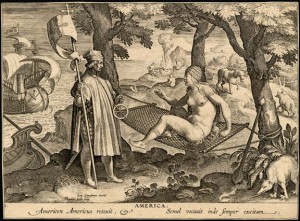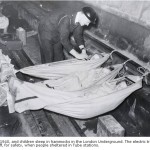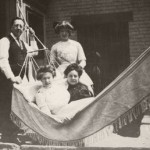When you think of a hammock or an actual “banana hammock”, you think of rest and relaxation. Typical thoughts are of a hammock near a beach or somewhere quite. Hammocks usually tend to be somewhere peaceful where you know you can rock yourself to sleep.
Hammocks weren’t immediately identified with beaches. You may be surprised to know that hammocks date back well over 1,000 years in Central America. People indigenous to the area as well as the Mayans made hammocks out of bark and the fibers of plants. These hammocks which were suspended from the group provided protection from the likes of bugs, snakes, rats, and other creatures that would crawl around during the night. Just like animals that sleep in trees, they do it as it offers some protection from prey at night. According to our research there are accounts by explorers in the 16th century that they would put heating elements under their hammocks during the night (hot coals, etc..). Some sources indicate that even small kindling was used however I can imagine a small fire was not a very bright idea to place under a hammock.

It is said that explorers like that of Columbus were the first Europeans to see and get the true experience of a hammock due to the Taino people in the Bahamas using them in such a wide spread manner. In the colonial era, Europeans and those from Spain brought materials like cotton, canvas and other various clothes to the new world. Those who made traditional hammocks began to incorporate those materials. In many parts of Latin America colonist began to use hammocks over what was considered a traditional bed. They apparently enjoyed the motion of the hammock more than a traditional bed. It was written by a chronicler of Brazilian history that in 1570 the majority of the beds in homes were hammocks and it was a custom adopted from the Indians of the land.
Fernandez de Oviedo y Valdes

Ovideo came to America in 1514. Ovideo kept track of goods, products and the people’s customs in the Caribbean and Central America for 13 years. He introduced Europe to the pineapple, canoe, the smoking of tobacco and the hammock.
He wrote,” The indians sleep in a bed they call an ‘hamaca’ which looks like a piece of cloth with both an open and tight weave, like a net … made of cotton … about 2.5 or 3 yards long, with many henequen twine strings at either end whichcan be hung at any height. They are good beds, and clean … and since the weather is warm they require no covers at all … and they are portable so a child can carry it over the arm.”
This information was received from the Library of Congress website.

In the mid 16th century, those that slept on ships had began using the hammock as the primary bedding. Instead of making them with ventilation they made the hammock out of canvass. These canvass hammocks had less ventilation and were uncomfortable. This hammock designed stayed in place for 300 hundred years which included wars from World War I and World War II.
Other Uses for the Hammock
In the later parts of the 19th Century British prisons began replacing prison cots with hammocks. The hammocks saved space

and cut cost but were only good until the inmates found other uses for the hardware used to suspend the hammocks. Just like prisons of today, prisoners always find different uses for things that are not traditionally thought of. Hammocks during this time became popular with wealthy families as they began to associate the hammock with relaxation. Farmers during this time found hammocks to be a cheap sleeping arrangement.
By the early 1900’s hammocks became a part of army physician William Gorgas’ plan to eliminate yellow fever during the Panama Canal construction. Mosiquto nets were easily placed over hammocks and the hammocks kept sleepers off the dirty, wet bug filled ground.
Mass Producer of Hammocks
The known first mass producer of hammocks opened its doors in Pawley Island, South Carolina in 1889. Despite our efforts the name of this company was not located.
There is a study available that offers an explanation as to why the use of a hammock has carried on through the centuries. Without getting too technical, individuals sleeping in a hammock fall into a deeper sleep. This gives much credit to why parents rock their child asleep.
Hammocks are amazingly simple yet so useful. Just another reason why Joe’s Banana Hammocks exists; to share all located information on banana hammocks.
 Joe's Banana Hammock The Original Banana Hammock Website
Joe's Banana Hammock The Original Banana Hammock Website